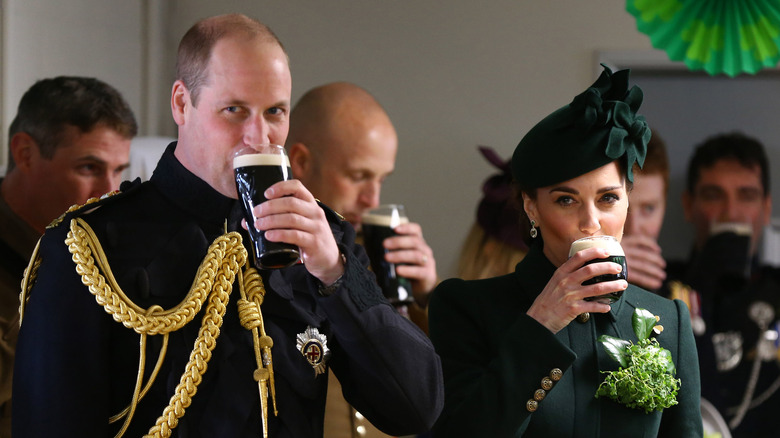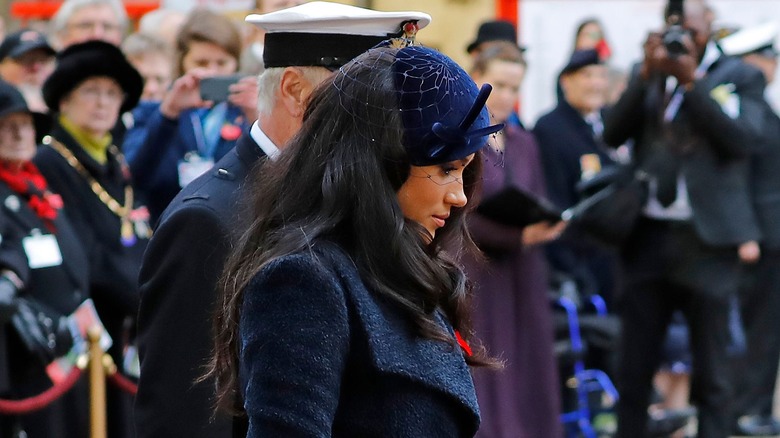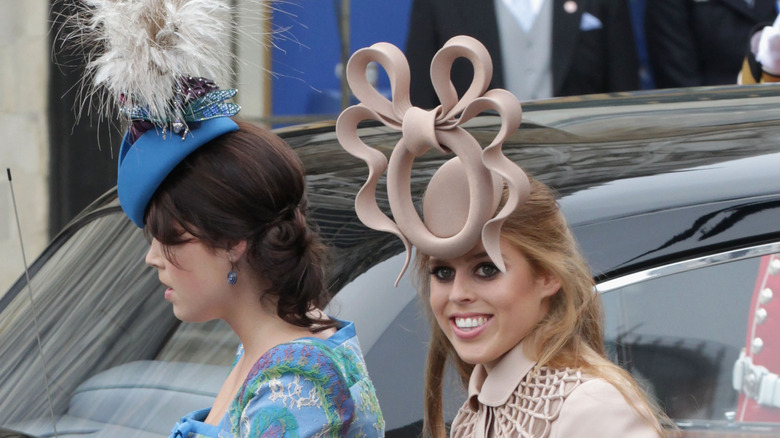The Untold Truth Of Fascinators
They are a staple at royal weddings, and depending on your personal preference, they can be veiled, romantic, poofy, fluffy, or geometric. Fascinators do more than just decorate the top of your head — Allure says they can not only make you look taller, they also make sure your hairstyle stays in place.
Of the fascinator, American milliner Marie Galvin says (via Brides), "For some women it represents a status symbol or honoring tradition, for others it's pure fun. Depending on the event, there's often an unspoken competition for best fascinator or headpiece, and that's where the fun ensues. Some of my customers wear them as a form of self expression, especially the more elaborate and artistic pieces. A great headpiece is like a fab pair of Louboutins. It completes an ensemble and adds a sexy-chic sophistication to the overall look."
The fascinator may be quintessentially British but was born in the U.S.
Today's fascinator, famously donned by royals such as Kate Middleton and Meghan Markle, is descended from a headpiece that is uniquely American. London-based milliner Stephen Jones, told Vanity Fair that American milliner, John P. John, made hats that he dubbed fascinators. "These were hats made out of veiling which went on top of your beehive," he said. "In the 1950s, in America, small hats had been called clip-hats or half-hats, but 'fascinator' sounds much more alluring. It was a marketing ploy by Mr. John that was extremely clever."
Allure credits Jones and fellow British hatmaker Philip Treacy with making fascinators a thing in the 1980s; Jones himself tells Vanity Fair that he was partial to smaller hats because they were more practical. Basically, he noted that big hats weren't easy to wear out to a nightclub, so small hats were found to be far more useful. "And that hat has got to be far more whimsical — or a fascinator," he said. "Because that's what will work on a dance floor or in the back of a limo."
Some hat designers don't consider the fascinator to be a real hat
Ironically, British hatmaker Stephen Jones doesn't consider the fascinator a royal hat, simply because he thinks it doesn't go well with the tailored look that the royals embrace when they undertake their daytime engagements. British etiquette expert William Hanson agrees, saying, "When it comes to an aristocratic or royal wedding, a hat is an absolute essential for a lady [but] the idea of a hat sends shivers down the spines of the younger generation — 'I can't wear that,' 'My mother wears hats,' 'My grandmother wears hats,' I'm not their age.'"
The younger royals, though, seem to be challenging that way of thinking, as fascinators pop up more and more during royal appearances. "Fascinators can be just as formal and elegant as a hat," notes Lucy Hume, associate director of Debrett's. Like Princess Beatrice at Prince William and Kate Middleton's wedding, the fascinator became an expression of the younger royals' personalities, making the fascinator a very modern, and very irresistible, head topper.


